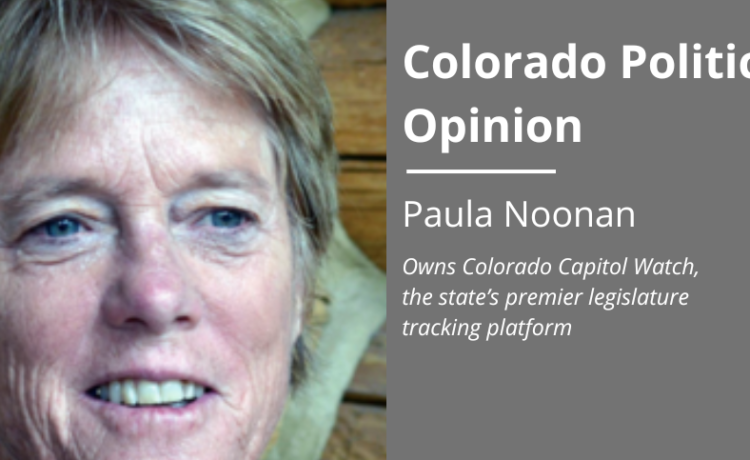Paula Noonan
After 30 years of use, the legislature is looking to change the money formula that funds public schools. The current formula, put in place in the 1990s, sets a base amount for every child and then adds extra dollars for cost of living, free/reduced lunch (FRL), English language learning (ELL), at-risk factors and special education (SPED). The new formula reorders this list.
The new formula in HB24-1448, “New Public School Finance Formula,” will bolster education dollars by $84 million cumulatively over six years to a total of $500 million. There is no extra funding source for this money. Revenues will mostly come out of dollars stashed in the state education fund that receives one-third of 1% of tax money, or about $1.2 billion per year.
The bill is based on results of two task forces that examined how education funding should be “modernized.” One of the bill’s effects is to increase the dollars to rural schools that have trouble providing extra services to students with special needs. Rural Colorado strongly supports the bill.
Stay up to speed: Sign up for daily opinion in your inbox Monday-Friday
Other districts, such as Mapleton School District, support the bill because it more thoroughly addresses the needs of English language learners. Districts left out of the bounty, especially large suburban districts like Boulder Valley, Jefferson County and Cherry Creek, see the bill differently. They may not be harmed by the legislation, but they won’t be helped either.
Underlying the messiness of Colorado’s public school financing is the larger problem of insufficient funding overall. Add up the effects of TABOR and its complicated formula to return tax dollars to taxpayers, a low-income tax rate, low property taxes now rapidly bumping up as home values increase, the reliance on sin taxes to make up gaps and the ballot initiatives that may upend this Rube Goldberg funding machine, and the result is vulnerability and variability in basic public school funding.
Vulnerability especially affected schools from 2010 when the Great Recession hit the state coffers. Public school finance declined precipitously and districts were forced to slash budgets. That year was the beginning of the negative factor now known as the budget stabilization factor when Amendment 23 from the constitution was dumped. Amendment 23, a requirement to add to school funding by the cost of inflation, has finally this year been fully resurrected, a mini-Lazarus miracle. Even so, the lost money affected school districts by more than $10 billion over 14 years.
Legislators can quickly turn off the $84 million drip out of the public school finance spigot. House Speaker Julie McCluskie, bill sponsor, said if there’s another calamity like the Great Recession or Great Pandemic. She asserts there’s enough revenue coming into the school finance fund along with more in the general fund to secure needed dollars.
The bill addresses equity, says the speaker. It more firmly directs dollars to student needs. Some bill critics noted districts that face declining enrollment may suffer. That is, as extra dollars are directed toward students rather than the underlying funding base, other district functions and needs will go unaddressed. These districts will have less money for salaries, for example, or other administrative costs of running schools.
The bill also won’t address Colorado’s mill levy issues by which school districts “de-bruce” their local tax contributions to their schools, giving those districts more money and a leg-up on school finance. Unfortunately, even when some districts de-bruce, their property tax revenue isn’t enough to meet student needs. Some politically conservative districts refuse to vote for extra mills. The state then steps in to underwrite extra dollars to those districts. That state “equalization” is motivation for some taxpayers to keep local district taxes low and let the state, aka the rest of Colorado’s taxpayers, pick up the difference.
From the other side, de-brucing causes its own inequalities. Aspen School District and Boulder Valley get healthy local revenue that bumps up their per-student funding. Academy 20, a wealthy district by average household income, has not raised its taxes to the same degree. It recently had a SPED debacle at one of its elementary schools when it could not find or retain teachers for its programs. The modernized school finance formula may give Academy 20 more money for special ed, but it won’t resolve the larger problem of low local funding because the voters of the district don’t want to pay more for their schools.
HB24-1448 will move to the Senate soon. Its two Senate sponsors, Democrat state Sen. Rachel Zenzinger and GOP minority leader Paul Lundeen, will push the measure through. Over six years, if the bill does what sponsors project, Colorado’s students should experience better education. That’s a shorter time frame for this experiment than the 30 years of the previous school finance formula. And, if circumstances change, as Speaker McCluskie said, legislators can quickly turn off the spigot again.
Paula Noonan owns Colorado Capitol Watch, the state’s premier legislature tracking platform.














